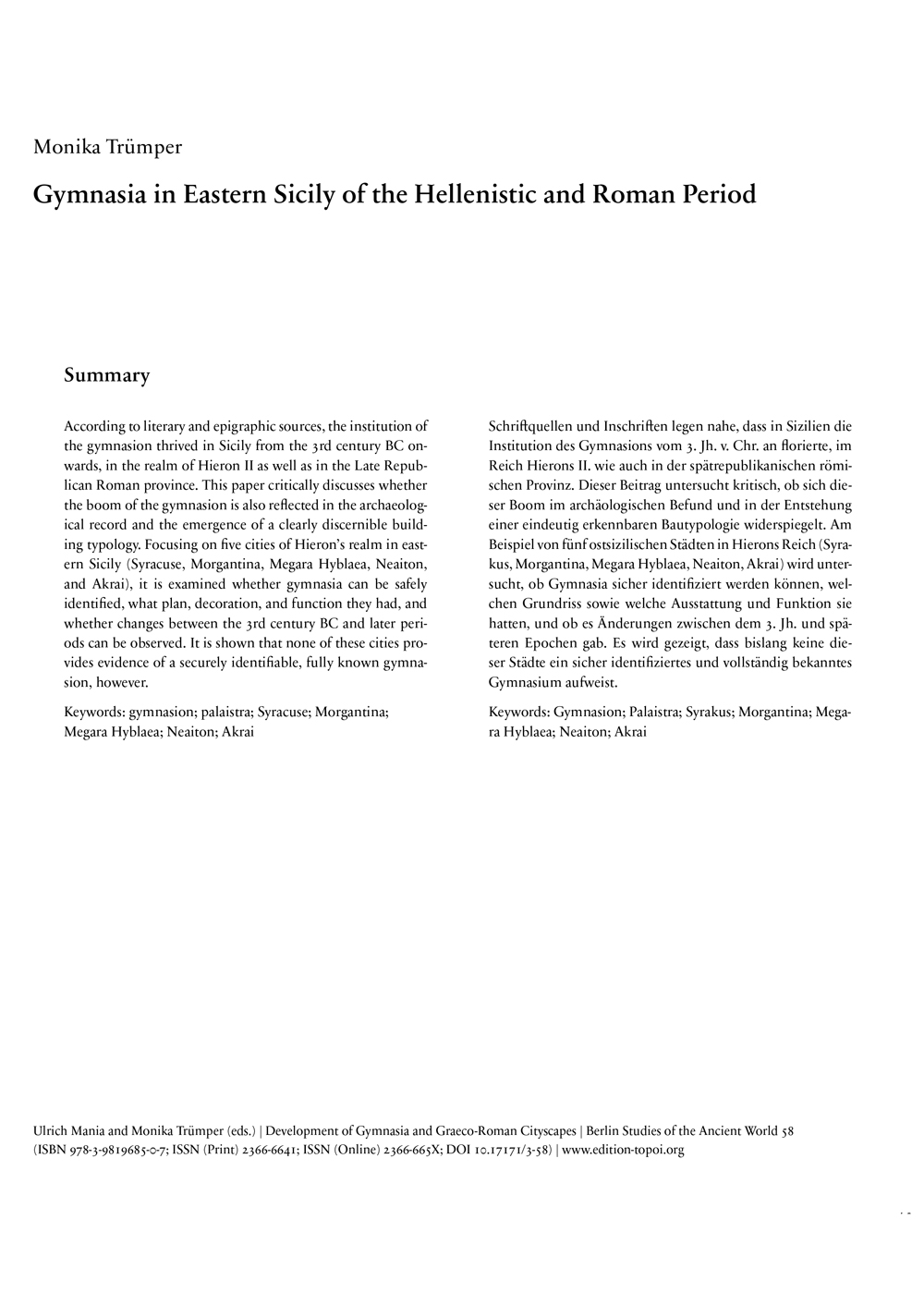Gymnasia in Eastern Sicily of the Hellenistic and Roman Period
According to literary and epigraphic sources, the institution of the gymnasion thrived in Sicily from the 3rd century BC onwards, in the realm of Hieron II as well as in the Late Republican Roman province. This paper critically discusses whether the boom of the gymnasion is also reflected in the archaeological record and the emergence of a clearly discernible building typology. Focusing on five cities of Hieron’s realm in eastern Sicily (Syracuse, Morgantina, Megara Hyblaea, Neaiton, and Akrai), it is examined whether gymnasia can be safely identified, what plan, decoration, and function they had, and whether changes between the 3rd century BC and later periods can be observed. It is shown that none of these cities provides evidence of a securely identifiable, fully known gymnasion, however.
Schriftquellen und Inschriften legen nahe, dass in Sizilien die Institution des Gymnasions vom 3. Jh. v. Chr. an florierte, im Reich Hierons II. wie auch in der spätrepublikanischen römischen Provinz. Dieser Beitrag untersucht kritisch, ob sich dieser Boom im archäologischen Befund und in der Entstehung einer eindeutig erkennbaren Bautypologie widerspiegelt. Am Beispiel von fünf ostsizilischen Städten in Hierons Reich (Syrakus, Morgantina, Megara Hyblaea, Neaiton, Akrai) wird untersucht, ob Gymnasia sicher identifiziert werden können, welchen Grundriss sowie welche Ausstattung und Funktion sie hatten, und ob es Änderungen zwischen dem 3. Jh. und späteren Epochen gab. Es wird gezeigt, dass bislang keine dieser Städte ein sicher identifiziertes und vollständig bekanntes Gymnasium aufweist.

